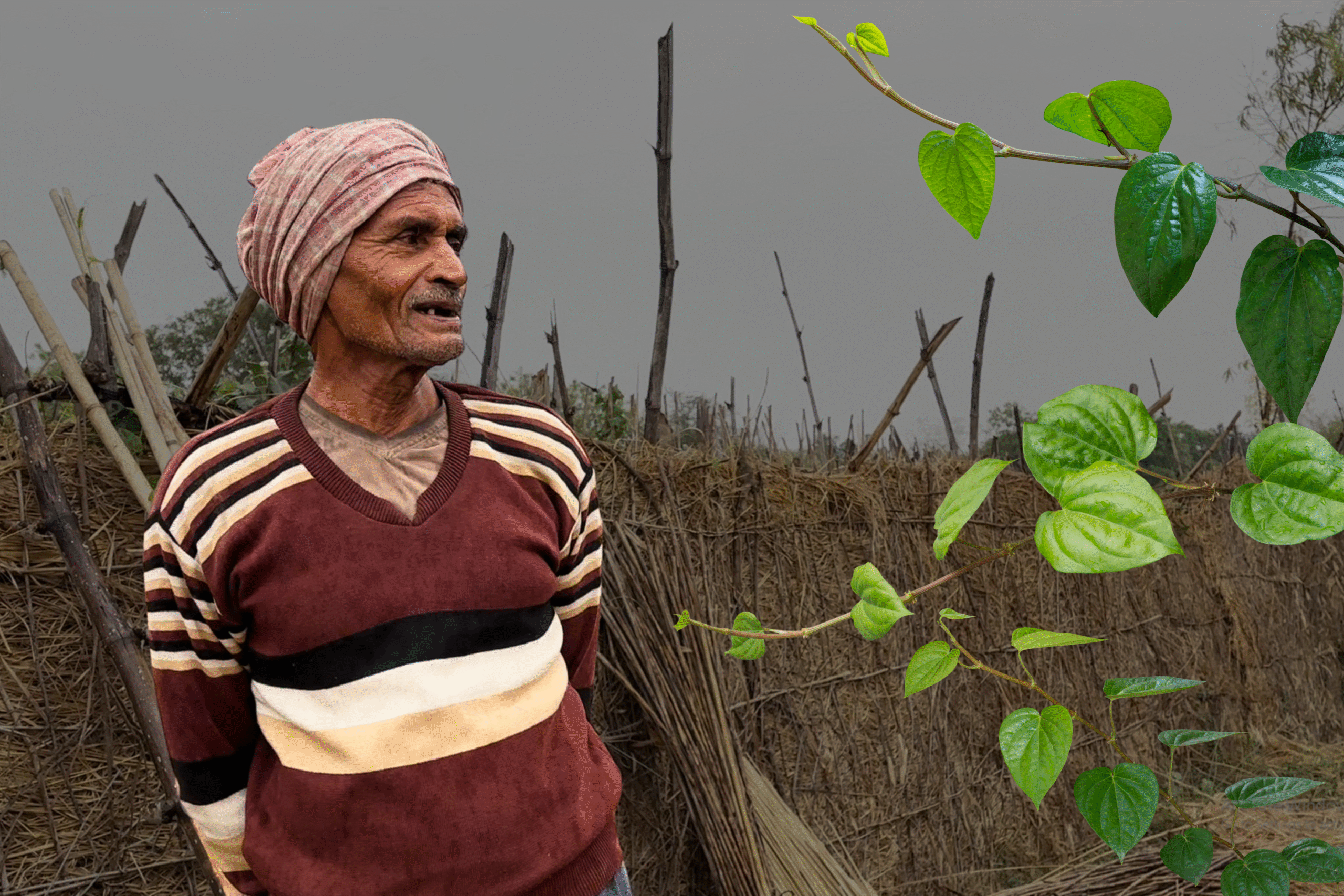Srinagar, Jammu & Kashmir
The floating pink lotuses that captivate tourists visiting Srinagar’s Dal Lake in Jammu and Kashmir, also serve as a source of livelihood for many farmers. The stems of the aquatic lotus plants are locally called nadru, and cherished highly in Kashmiri cuisine.
Nadru (lotus stem, also known as nadur or kamal kakadi) are cultivated mainly in Dal Lake and Anchar Lake in Srinagar, and Manasbal Lake in Ganderbal district, which is a source of livelihood for many farmers in the area.
On cold mornings, at the crack of dawn, it is not uncommon to see farmers in boats, wielding six-foot long wooden poles with metal hooks on one end called shum, pulling out the lotus stems from deep inside the water.
Ghulam Muhammad Mattoo is an 82-year-old nadru farmer who lives near the Dal Lake in Moti Mohalla, Sada Kadal, in Srinagar. “I have studied only till class five after which I dropped out as my father took ill. I have been harvesting nadru for 70 years,” he told Gaon Connection.
Also Read: Dairy Farming Gets a Fillip in Shopian, Kashmir
“The harvesting of the lotus stems happens between September and March. The seeds are sown just once, and we enjoy the harvest for years after that,” the old farmer explained.
The lotus plants spread across the lake into little islands of green, and once the flowers have wilted, it is time for the stems to be harvested, he said.
In the harvesting months, farmers such as Ghulam Mohammed, spend all day on their boats, eating, praying and gathering the nadru. “It is not an easy job, harvesting the nadru. It takes experience and patience,” Ghulam Mohammad, who continues to work even today, said.
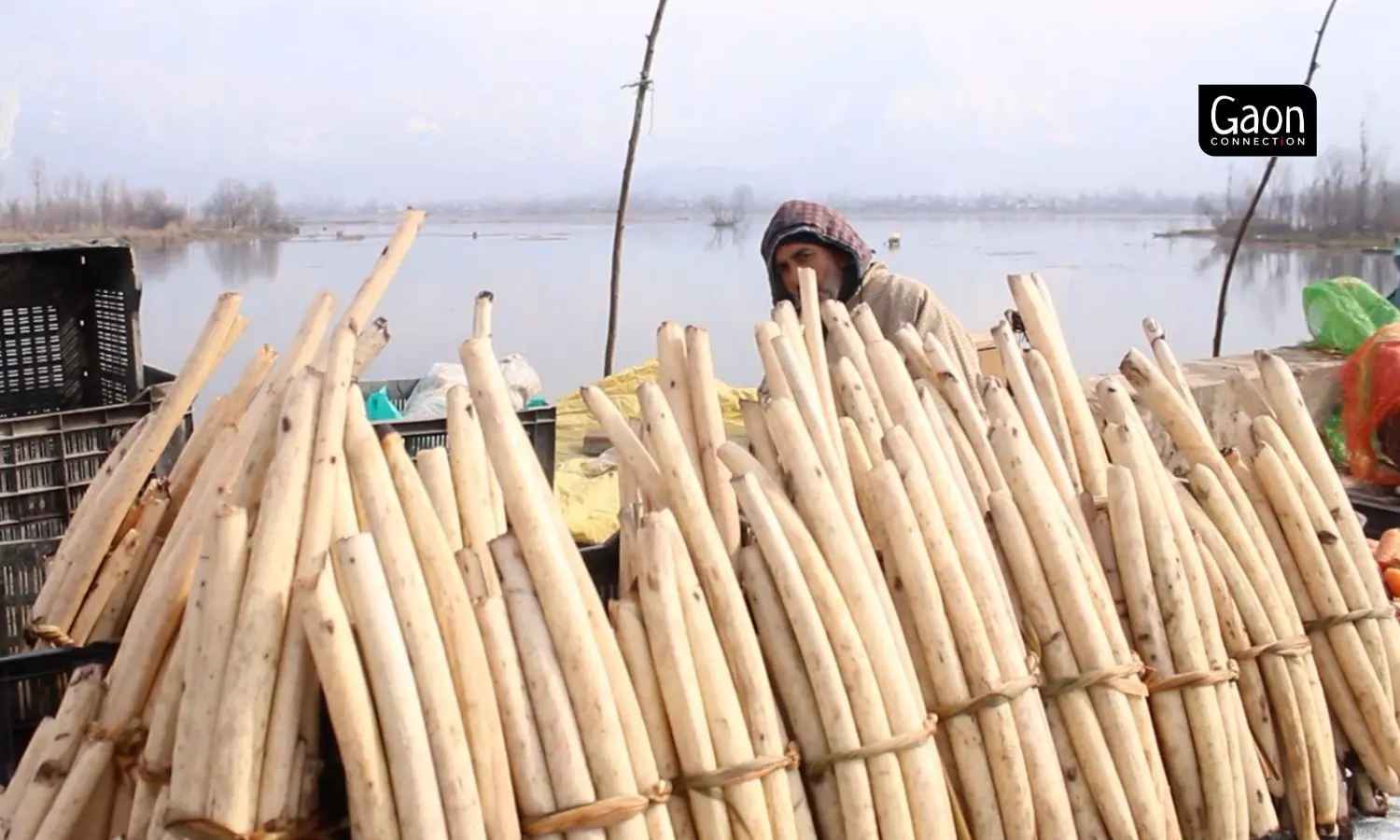
The lotus plants spread across the lake into little islands of green, and once the flowers have wilted, it is time for the stems to be harvested.
Nadru is a quintessential part of Kashmiri cuisine. It is cooked in several ways, combined with fish, collard greens, potatoes, spinach, or eaten even just by itself as a curry, or deep fried. It is said to contain Vitamin-C and B-6, potassium, thiamine, copper, and manganese and plenty of fibre. Lotus stem is said to be beneficial in the treatment of patients with diabetes, with thyroid problems and cough.
Also Read: Kashmiri farmers move from paddy fields to apple orchards for higher returns
“Come rain or snow, we do not stop the harvesting of nadru. It is a lot of hard work and I have been doing it for 10 years. I learnt about cultivation and harvesting of nadru from my father and grandfather. It took me four years before I was proficient in it,” Muhammad Abbas Matu, a 37-year-old farmer who also lives in Moti Mohalla, told Gaon Connection.
“In one day we are able to harvest enough nadru, to make about 10 to 20 bundles. Each bundle has 15-16 lotus stems. We pluck them from the water, clean them and then tie them into bundles, and it has to be sold right away,” Muhammad Abbas explained.
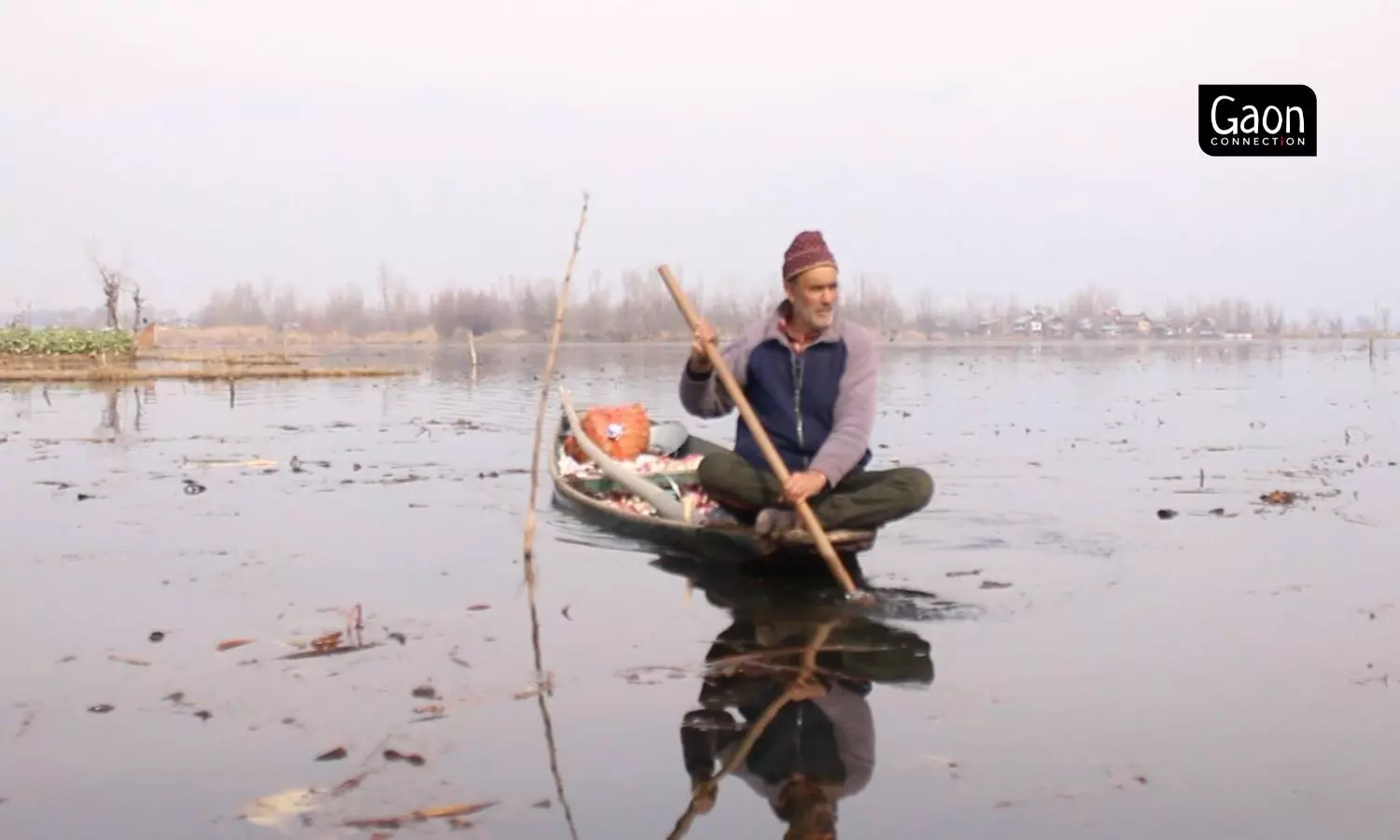
Ghulam Muhammad Mattoo is an 82-year-old nadru farmer has been harvesting nadru for 70 years.
Mohammad Abbas and Ghulam Mohammad are farm labourers. In the winter months between September and March, they spend on the boats on Dal Lake harvesting nadru and get paid Rs 1,000 a day. “We also get a bundle of nadru with the money,” Mohammad Abbas said.
For the rest of the year, they continue to work on vegetable farms elsewhere. There are about 3,000 nadru farmers in Dal Lake and 600 in Anchar Lake. But the nadru from Anchar Lake are not too popular with consumers as they fear that the hostels of a local medical institute discharge the sewage water into the lake.
Also Read: Almond cultivation in Kashmir proving to be a hard nut to crack
“Machines that have been put into the Dal Lake to clean it have messed with nadru cultivation and damaged many of the plants. Also, a flood in 2014, washed away all the plants and we had to sow afresh with seeds brought from Anchar lake in Soura near Srinagar and Manasbal lake in Ganderbal district,” Ghulam Mohammad said.
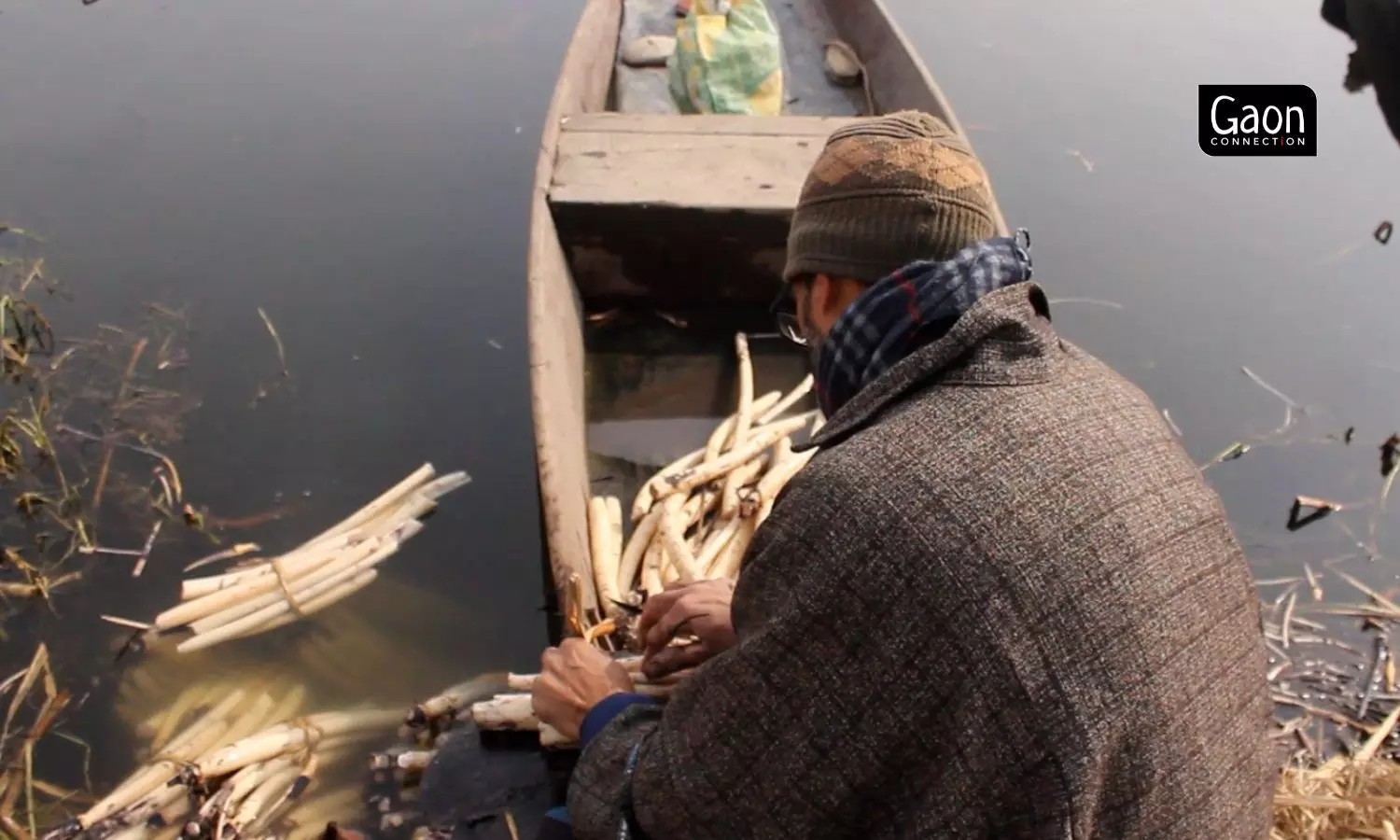
In the winter months between September and March, they spend on the boats on Dal Lake harvesting nadru and get paid Rs 1,000 a day.
Also, said Mohammad Abbas, “Not too many young people want to do this work because it involves sitting in one place all day. They are not ready to work in the chilling cold.”
Bashir Ahmad Tinda, who cultivates nadur on about six acres on the Dal Lake reiterated that the supply of nadur had come down. “I collect the nadur from the farmers and also supply to the vegetable vendors on Dal Lake, street vendors and also to the Parimpura Mandi that is about 12 kilometres away,” the 47-year-old who lives not too far from Dal Lake, told Gaon Connection.
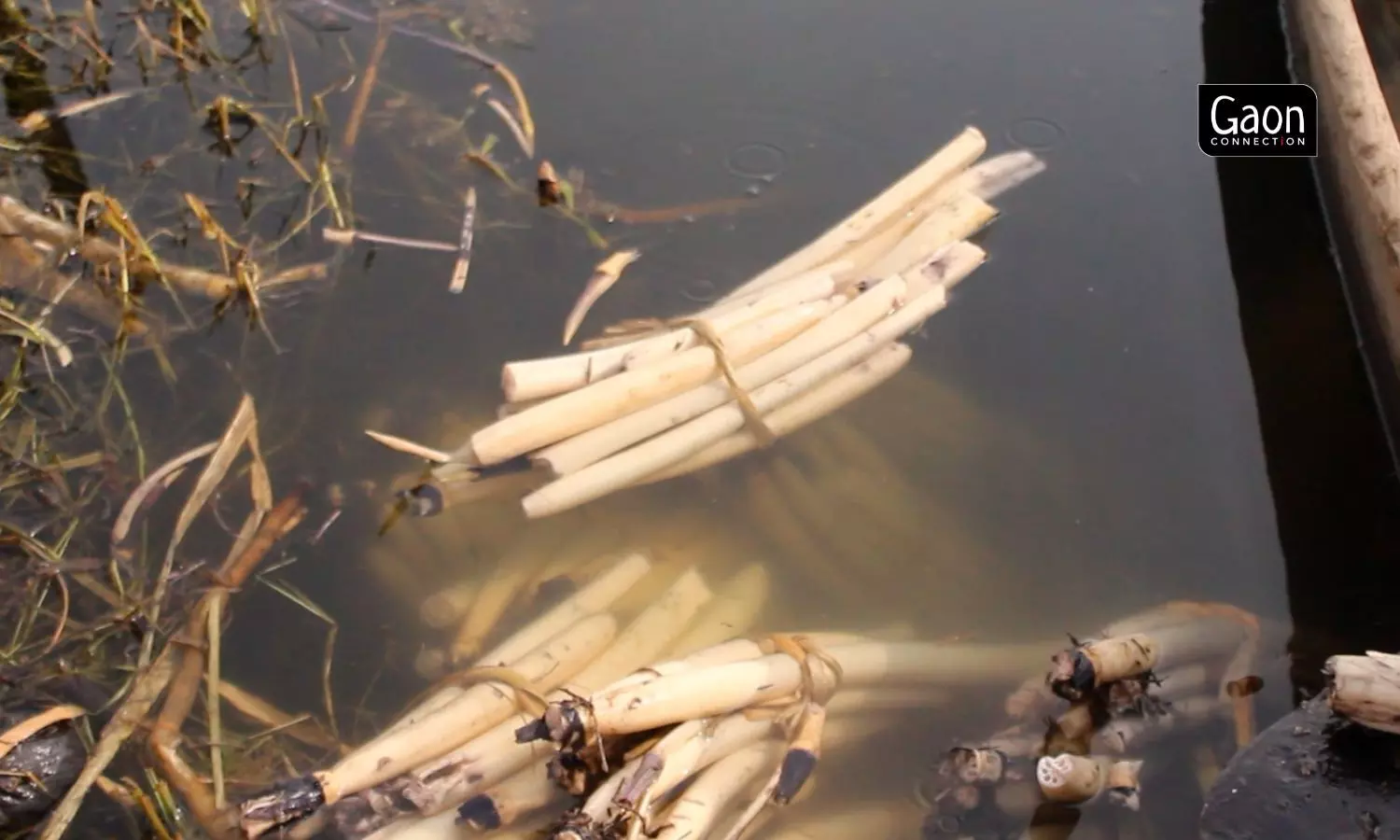
Nadru is a quintessential part of Kashmiri cuisine, cooked in several ways.
“Before the floods, we used to get at least 40 to 50 bundles from each farmer, but not any more. The machines being used to clean the lake have also wreaked havoc. Along with weeds, they have also damaged the lotus plants and the diesel from them have polluted the waters,” Tinda said.
Vegetable seller Ghulam Muhammad Sufi’s livelihood also depends partly on nadru. “I have been selling vegetables on Dal Lake since my childhood,” the 65-year-old Sufi told Gaon Connection. He said he bought the nadru for about Rs 230 a bundle and sold it for up to Rs 260.
“But that is on a good day. But increasingly, there are days when we can’t sell even 10 bundles,” he said. He too blamed the machines put into the lake that had decreased production and quality of the nadru.







